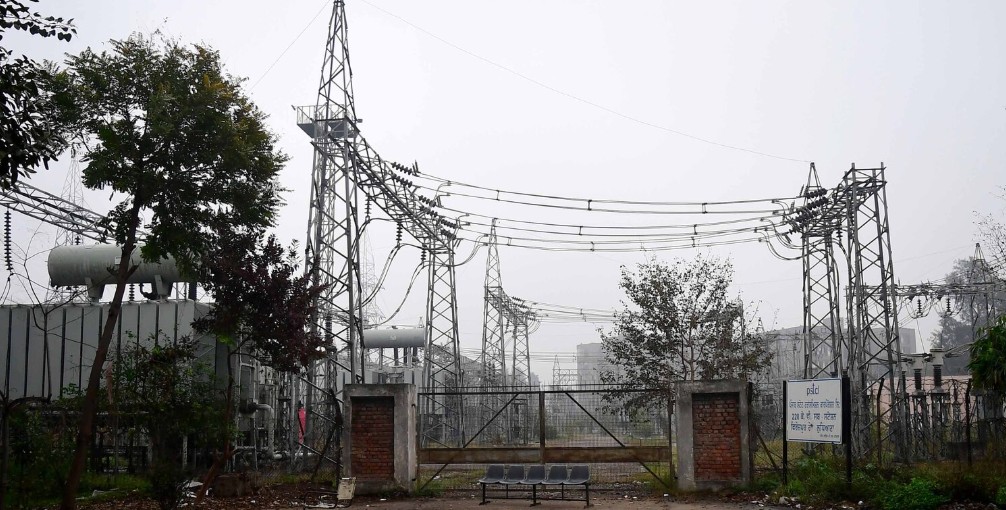The bustling industrial hub of Ludhiana experienced significant disruption on Friday evening and extending into the early hours of Saturday, as strong winds swept through the district, triggering widespread power outages. The gusty conditions, unseasonable in their intensity for mid-May, caused considerable damage to the power infrastructure, leading to blackouts across numerous localities and prompting an overwhelming surge in consumer complaints to the Punjab State Power Corporation Limited (PSPCL). By Saturday morning, more than 22,000 complaints had been officially registered, underscoring the severe impact of the weather event on the city’s electricity supply.
The sudden onslaught of high-speed winds, while not reaching cyclonic proportions, was powerful enough to wreak havoc on the overhead electricity network. Reports from various parts of the district indicated snapped power lines, dislodged transformers, fallen poles, and tree branches crashing onto electrical wires, causing short circuits and widespread disruptions. The sheer force of the wind, accompanied by dust and intermittent light rain in some areas, made immediate repair efforts challenging for PSPCL ground teams.
The outages began to manifest in the late evening, coinciding with peak electricity demand as residents returned home and businesses prepared for their evening operations. As the night progressed and the winds continued their relentless assault, more and more areas succumbed to darkness. From densely populated residential colonies to industrial zones and commercial hubs, no part of the district seemed entirely immune to the power cuts. This created significant inconvenience, particularly for households relying on electricity for lighting, cooling, and essential appliances, especially as temperatures remained uncomfortably high.

The immediate aftermath saw PSPCL’s complaint lines and online portals inundated with calls and messages from frustrated consumers. The sheer volume of over 22,000 complaints registered within a span of hours speaks volumes about the scale of the disruption. Many callers reported long wait times, difficulty connecting to customer service representatives, and initial uncertainty regarding the estimated time for power restoration. Social media platforms, particularly local community groups, became a hub for residents to share updates on their power status, express their grievances, and seek information.
PSPCL officials acknowledged the severity of the situation, attributing the widespread outages directly to the unprecedented intensity of the winds. They confirmed that hundreds of field engineers, technicians, and linemen were mobilized immediately to address the faults. Repair teams were deployed to tackle snapped wires, rectify transformer issues, and clear debris from power lines. However, the sheer number of localized faults, spread across a vast geographical area, presented a monumental challenge.
The primary focus of PSPCL’s repair efforts was to identify and rectify major trunk line faults that affected large areas, aiming to restore power to as many consumers as quickly as possible. Simultaneously, teams were dispatched to address individual faults in smaller localities, although this process was inherently more time-consuming due to the dispersed nature of the damage. Accessing certain affected areas was also challenging in the dark and amidst the continued windy conditions.
Beyond the immediate inconvenience, prolonged power outages in a major industrial hub like Ludhiana have broader economic implications. Many small and medium-sized enterprises (SMEs) rely heavily on uninterrupted power supply for their production cycles. Even a few hours of downtime can translate into significant financial losses due to halted production, wasted raw materials, and missed delivery deadlines. While larger industries often have backup generators, smaller units are more vulnerable to such disruptions. Commercial establishments, including shops, restaurants, and offices, also faced operational difficulties, impacting their evening trade.
For residents, the lack of electricity meant disruption to daily routines, particularly affecting vulnerable populations such such as the elderly, young children, and those with medical conditions requiring power-dependent equipment. The absence of fans or air conditioning units made the night uncomfortable, especially in the warm Ludhiana climate. Charging mobile phones and other essential devices also became a challenge, further isolating those without power.
By Saturday morning, PSPCL reported that significant progress had been made in restoring power to many affected areas. However, officials cautioned that full restoration across the entire district might take several more hours, potentially extending into the afternoon, as technicians continued to work on individual and complex faults. They appealed for public cooperation and patience, assuring consumers that all available resources were being deployed to normalize the situation.
This incident serves as a stark reminder of the vulnerability of urban infrastructure to extreme weather events, even those not classified as major storms. It also highlights the critical role of robust power distribution networks and efficient disaster response mechanisms. While PSPCL’s efforts to mobilize teams rapidly were commendable, the sheer volume of complaints suggests a need for continuous investment in infrastructure upgrades, particularly underground cabling in densely populated areas, to mitigate the impact of such weather phenomena in the future. Furthermore, effective communication strategies during widespread outages remain crucial for managing public expectations and providing timely, accurate information. The people of Ludhiana, now emerging from a night of darkness, will undoubtedly be hoping for a swift and comprehensive restoration of normalcy.


